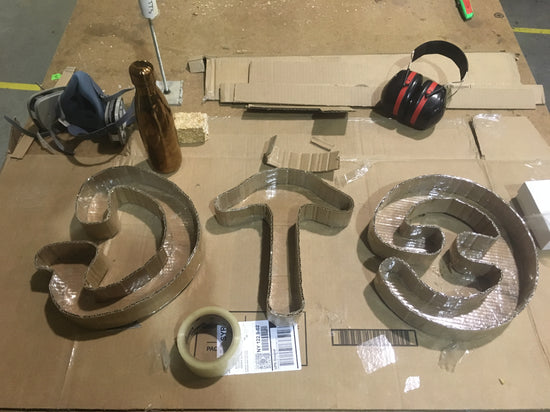How You Can Help Companies Switch to Sustainable Packaging
If everyone knows that plastic is bad for the environment, why is it still so widely used? That’s the question that has been bugging me for as long as I can remember. Most of us are taught from a young age that these materials are horrible for the environment and our health (thank you to all the awesome teachers and parents who carry on this education!), but when we order a package online, or even buy something from the store, the product is wrapped in annoying foam pieces that flake everywhere and make you feel guilty when you have to put them in the garbage. So what is the missing link? Why isn’t the widely known and accepted fact that these materials are harmful to the environment translating into more sustainable packaging options being used? Based on my what I have learned while working at Ecovative, I think that it really comes down to 4 things: Plastic works. Plastic has been around for about 150 years. Since it first hit the market, it has revolutionized the material industry. This material is quick, cheap, and readily available. Depending on how it’s processed, it is able to achieve a huge variety of material properties that can make it sterile, food safe, expandable, flexible, firm, colorful, carvable, waterproof, etc. The possibilities are seemingly endless. Plastic is really an incredible material, and it does have useful applications, but protective packaging is not a good use of this material because it has a very short time in use and then ends up in a landfill for generations to come. Over the last 60 years or so years, companies looking to package their items have standardly used Expanded Polystyrene, Expanded Polyethylene, and Expanded Polypropylene as their go-to materials. It has kept their products safe during shipment for this long, so why switch it up now? What’s the incentive? Natural options look “weird” or “different.” Over time, people have become accustomed to the uniform, sterile look and feel to standard packaging products. It has a certain aesthetic that people have come to associate with the desirable, modern look. But why is this desirable? Who decided that these rigid lines, uniform colorings, squeaky textures, and glossy surfaces for protective packaging were the best look? Let’s change the standard. Companies aren’t aware of other options. Everyone knows about Styrofoam and plastics, but (unfortunately) not everyone knows about Ecovative’s Mushroom® Materials or other sustainable options. If companies don’t have an incentive to research alternatives, they might not know there are options out there that are not only performance and cost competitive, but that are significantly better for the environment. They likely only know what they’ve had experience with. Plastic is cheap and fast. Well, that’s the perception at least. These materials are derived from petroleum that took millions of years to form, and is extremely expensive to extract from the Earth. Due to the ongoing and huge government subsidies to the petroleum industry, plastic prices are able to remain low. These subsidies are intended to keep gas prices low, but they’re also contributing to our economic reliance on plastics because they remain a cheap solution. Once the polymer beads or pellets are formed and then expanded, it’s pretty fast and inexpensive to cut these formed blocks into different shapes and applications. But companies need to realize that the process (below) is extremely energy intensive, and they should be taking the environmental costs of their decisions into consideration. [embed]https://www.youtube.com/watch?v=q6OVD_2xliM[/embed] So how do we get these companies to change their routine and perception? As consumers, we need to create demand. Companies want to keep their customers happy, they want to know the latest consumer habits and behaviors. Companies are investing money and resources into studying what you want and then adjusting accordingly. Tell companies that you want them to use sustainable packaging by writing letters, posting on their twitter or facebook, or even calling them. Ask companies if they have a corporate sustainability mission/ goal. Having one will help drive them to look for alternatives. Get their attention by creating or signing petitions that they should be switching to sustainable options. This petition was created by a consumer concerned about Amazon.com’s packaging choices. If you’re willing, protest that you won’t buy products from a company unless they use sustainable packaging options. Educate companies that biomaterials work and that they don’t have to be more expensive or slower. Mushroom® Packaging is a cost and performance competitive solution, and we are able to meet or exceed the demands of our customers. Introduce them to the alternatives. They may not have time to do research on their own. Mushroom® Packaging is a great option for custom molded shapes, but check out some of these great solutions too: http://begreenpackaging.com/ http://www.ecologicbrands.com/http://www.molded-pulp.com/packaging.html http://www.greenpackaginggroup.com/product-categories/filler-cushioning http://www.sealedair.com/recycling-paknatural-loose-fill-paknatural-cushion-bag Tell them that you would rather have packaging that looks natural because it’s just that… natural. I think our packaging is beautiful (especially with our new surface finish), but then again… when I think about it from a consumer point of view, do I really care what the thing holding my television in place in a box looks like?? Not at all. As long as the product arrives safely, I’m happy. And if that can be achieved without poisoning the Earth at the same time, I’m ecstatic. So get out there and start creating some buzz. We’re creating sustainable materials, but we need your help to create awareness and demand. Let’s make this positive change together. - Melissa Jacobsen




